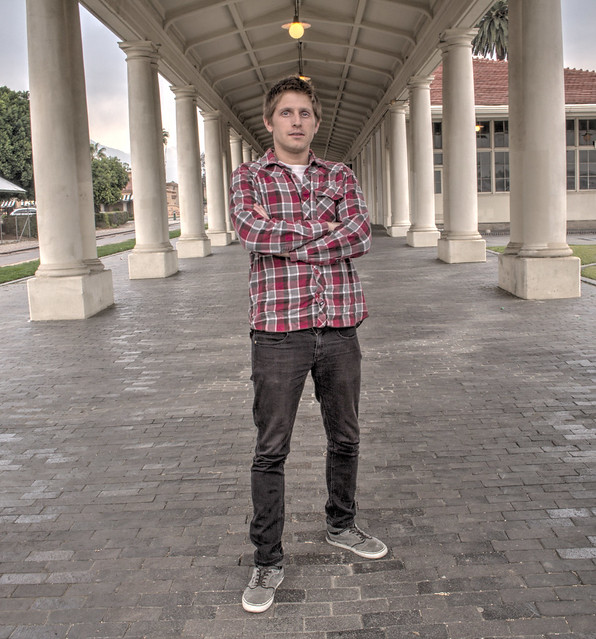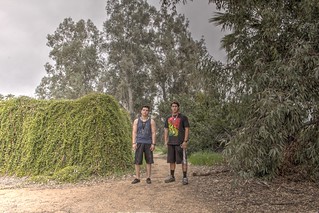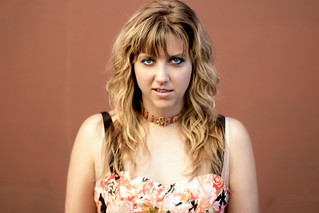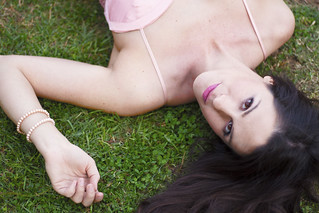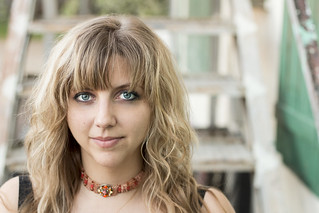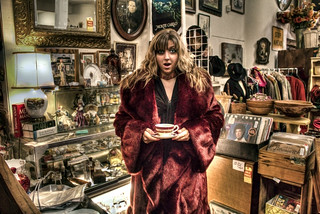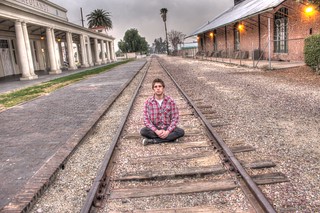Home › Forums › Am I a Fauxtog? › How am I doing?
- This topic has 11 replies, 6 voices, and was last updated 9 years, 1 month ago by
Visionthing.
-
AuthorPosts
-
March 14, 2015 at 11:16 am #25158
operacabra
ParticipantI’m 23, a teacher, and I’ve recently taken up photography as a hobby. I’m completely self taught and I shoot with a Canon EOS Rebel SL1 and I have three lenses (18-55 mm, 50 mm, and 55-250 mm) I edit in adobe photoshop (and Photomatix for HDR) and I’ve been shooting nearly non stop for the past 6 months or so since I bought the camera. I think I’m obsessed. Recently, I had some offers to pay for portrait sessions. I’ve done two weddings (both unpaid) and around 20 or so free portrait sessions. I just put up a website but am nervous in doing so because I know my work is not up to par yet, I just felt with as many sessions as I’ve done, why not? Everyone’s gotta start somewhere. Anyways, here’s some links to what I think are my best pictures so far. Please tell me what you think works and what doesn’t. Also, I know my website is in need of some major culling as far as content goes, I’m working on that. Having some trouble finding my style. And my flickr is just a dumping ground for nearly everything I’ve shot. You can pretty clearly see my progress from that though. And there’s some pretty bad HDR experiments in there too. Anyways, enough excuses. here it is. Tear it apart! 🙂
My Photostream: https://www.flickr.com/photos/126109499@N02/
My Favorites:
You can be harsh but please don’t be unkind. I’m looking for ways to improve. I can’t really afford classes or new equipment right now, but if you could direct me to books or websites that could help me that would be much appreciated!
March 14, 2015 at 12:30 pm #25159MrsManiak
ParticipantDisclaimer: I am not a professional, but a hobbyist who is considering one day making the jump. Also relatively new like yourself (~ a year and 1/4 in)
Learn to shoot in manual exposure, it gives you more control over what your final image looks like. On that same note, shooting in RAW gives you even more control. When you shoot in JPEG, the camera makes all the processing decisions for you. Shooting in RAW, you get to choose how it gets processed (summed up in the simplest way I can think of). Same thing goes for Auto/manual.
HDR isn’t really my style, to me it makes the subject look grungy. To me, HDR for portraits would be acceptable for, say, a coal miner because it would bring out all the fine lines, dirt, and imperfections, giving a rugged feel to it. But I would never use HDR for a “regular” portrait for those exact same reasons. That being said though, you’re learning, have some fun with it and do what appeals to you.
Some sites worth reading for a beginner:
http://www.cambridgeincolour.com/
http://www.morguefile.com/classroom
That’s my 2 cents 🙂
March 14, 2015 at 12:36 pm #25160operacabra
ParticipantThese were all shot in manual mode and RAW…was there something that made you think they weren’t? I’ll check out those links. Thanks!
March 14, 2015 at 12:58 pm #25161MrsManiak
ParticipantThe EXIF data on the doll said it was shot in auto. The HDR images I looked at didn’t say one way or the other, I’m assuming because they were merged with photomatix. As for the RAW I’m guessing different camera types are processed by photoshop with different raw extensions, Adobe Camera Raw is what always shows up in my EXIF, Adobe XMP is what showed up on yours, and I apologize for not realizing they were both for RAW processing. Either way, the sites I liked are always helpful 🙂
March 14, 2015 at 1:00 pm #25162operacabra
ParticipantYeah, the doll was done on auto. I’d forgotten. It was from my first few days shooting, I’ve just always liked it! lol Thanks again for the links. Looking at them now! 🙂
March 14, 2015 at 1:04 pm #25163MrsManiak
Participantyou’re welcome. You have a lot of photos, I only looked at a handful hehe
March 14, 2015 at 1:59 pm #25164jussharp
Participant.
March 14, 2015 at 2:01 pm #25166operacabra
ParticipantThanks for the suggestion! I’ll get on that.
March 14, 2015 at 5:37 pm #25170cameraclicker
ParticipantWithout looking through much of your Flickr account, here are a few thoughts which you can value at what you paid for them …
I like to have the camera save raw files. It makes changing white balance after the shot so much easier. Also, a camera like yours saves raw data as 14 bits per photosite. A JPEG only has 8 bits per pixel. The raw file has over 90% more data. This is a huge bonus if you want to adjust the dynamic range of your photo.
All manual mode shooting is over rated. And largely unnecessary. All of my film cameras are all manual, all the time. Current digital cameras are computers that take photos. You paid for the computer, you might as well use it. Learn what you can do with manual mode. It is most useful when you want the image to look different than the computer thinks it should, and when the computer is unaware of what conditions will be when the shutter is released. The rest of the time, you are just working too hard if you are shooting in manual mode all the time. The computer can focus and adjust exposure much faster than you can, most of the time. Use P, Tv, and Av, to tell the computer what you want most and let the computer work out the rest of the details. Manual mode is great when there are non-TTL strobes, so the camera doesn’t know there will be a bright flash while the shutter is open. Manual focus is great when a bird is in tree branches and the camera can’t get it focused because of the branches. Manual exposure or Exposure Compensation are good for shooting at night if you want a dark sky; the camera’s metering will try to average to 18% grey. That’s not a complete list, but you get the idea. If you are centring the meter in manual mode, you are working too hard, and if you are manually focusing, you are probably working too hard unless you are shooting macro photos.
Let’s look at one of your photos. This one
https://www.flickr.com/photos/126109499@N02/16188611883/
for instance.
Nice garbage can! A little distorted, but an interesting design. That door on the left is a little distorted too. What’s up with that? Well, any time you tip the lens up or down, your image keystones a bit. Objects tilt toward the top or bottom middle depending on the lens pointing up or down. If you are using Photoshop, under filters there is a lens correction tool that can fix that. Those lines that should be vertical can be made vertical again. In Adobe Camera Raw, there is also a tool that can fix that. They work slightly differently and sometimes one produces more pleasing results that the other, so try out both tools. Getting back to that garbage can for a moment, what are you trying to convey in this photo? It’s a hard thing to do. Even after years of shooting, lots of strange inanimate objects jump into my photos just as I release the shutter! You have to look around the edges of the viewfinder to see if anything is creeping into the frame. Having a camera that has a 95% or 97% viewfinder is not helpful. You don’t see the whole frame so junk at the edges is a common problem. Fortunately Photoshop can crop or otherwise get rid of it. Moving onto your subject, which I assume is the girl in the middle, she has a tree growing out of her head. And, she seems to have a strange pose. She blends into a very busy background, too. In some ways she is ruining a really good street scene. Your equipment list and EXIF data suggests you used your 18-55 kit lens at 18 mm for this photo. It would have been better to use the 50 mm, opened up all the way, which would let you blur the background more, and would force you to stand a little further back. The pose seems to have her leaning forward and the short lens is emphasizing her chest and shortening her arms. Being square to the camera makes her pretty wide. The knee in front of knee leg positioning is supposed to give her more of an hourglass figure by narrowing her knees, but the effect is lost because of the generous fabric of her skirt which hangs straight on the right side. Also, it is pushing her bum out on the left, making her look wider. There are lots of posing tutorials on the Internet. Not all of them are good. Review a few and try to understand the reasoning behind each pose suggested. Then do your own poses with your new understanding.
Moving on …
is hard to look at. The terra cotta backdrop has a vertical line a little left of your model. Your model is mostly out of focus and her busy dress, just out of focus is hard on my eyes. If you don’t get anything else in focus, get the eye closest to the camera. But in a photo like this, you should probably have enough DOF that all of her is in focus. Use f/8 or so. Put the backdrop far enough back that it is out of focus, possibly 4 feet back, but further would be better. Her expression says “annoyed” to me.
Moving along again …
is much better. The eyes are in focus. A cute chick with a nice expression. A soft background for her to pop against. The criticism is the stairs cut through her head. But at least they are blurred. It would be much worse if they were sharp lines. This is a pretty good photo.
Skipping ahead a little …
and the next one, shows you seem to like women to be square to the camera! If they stand facing a diagonal they may look better, it will show off their shape more while making them look more feminine and less like a football linebacker.
Starting at your most recent and going back, that’s two that have an HDR look. I think you do it pretty well. It looks low contrast, without being cartoonish. I think is suits inanimate subjects better than people, though.
Skipping along again …
please promise the next time you shoot railway tracks there will be a railway related subject, like a train, instead of a person on the tracks.
If your subject is short, like a child, or your yoga on the tracks model, you should get down to their level. See the comment above about vertical lines being vertical. The whole frame is tilted for no good reason.
Last one:
https://www.flickr.com/photos/126109499@N02/16611485569/
Yuck! Your model is almost against the left frame. You have leading lines on the right thirds line that take you way past your model, into the photo, where there is, … nothing. In this one, the HDR effect takes a probably grey day and makes it even more drab. When we drag our eyes over to your model we find most of his head is missing! What’s with that pose? Is he about to do a back flip on that little wall? How athletic! If he can do that, capture him in the air, up side down. Otherwise, a more normal pose would be more flattering.
Scrolling through the recent couple of Flickr pages suggests you have a reasonable eye and can take better photos than most of those this site was set up to mock. I think you will do fine.
March 14, 2015 at 6:02 pm #25171operacabra
ParticipantWow! That was very helpful! Thanks for taking the time to do that and pointing me in the right direction. I really appreciate it and I’ll take it all to heart.
March 15, 2015 at 1:19 pm #25172emf
ParticipantYou’ve had some great advice so far. One thing I just wanted to comment on is that I really like the one of the woman holding the mirror in front of her face, this is really simple but very effective and I’d be tempted to work a little project just around that idea.
March 18, 2015 at 3:54 pm #25221Visionthing
ParticipantI think your photos aren’t bad. I mean that your shots are better than a lot of the stuff you see on here. The questions I would have you ask yourself are: Why am I taking this picture and what do I want my subject to look like? I know this sounds ridiculously simplistic but that should be your first question before pressing the shutter. Why? Because your answers will dictate all your aesthetic choices such as….the location where you shoot, what you include in the frame and what you exclude in the frame, how far away you are from your subject, how much of your subject is in the frame, where you stand in relation to your subject, what lens length to use, what type of light will help with the type of mood I’m after etc…
You are doing a pretty good job of keeping your compositions clean. That is a lot of the battle with people starting out. One suggestion would be to move around, try shooting from a variety of perspectives. Most of your subjects are dead center in the frame. This has a tendency to make the image too static. I’m not saying never do that but as the saying goes;”Learn all the rules of photography, then break them”.
My last suggestion is never underestimate the drama and emotion that different light can have on a subject. Think of how filmmakers in Hollywood [who make the BIG bucks] use lighting to change the way you feel about a subject. Would a guy running at you with a chainsaw be scary if he did it in broad daylight? Try reshooting [if it’s possible] some of your same shots but shoot them in morning light, at dusk, contrasty light, light filtered through a window or a screen door, candle light etc… each of these will make your image feel completely different.
Actually this is my last suggestion: Look at other professional photographer’s work you like. Ask yourself what choices did the photographer make [look at the list above] and how did those choices enhance the look, feeling and meaning [to you]. You can always borrow an element you liked in their work and try to use it in yours. I don’t mean literally copy every part of their image just one element, like the way they used the light. Once you do this you will start to ask yourself these kinds of questions and when you start to find the answers….you will be on your way to being a more conscious photographer!
Two photographers to look at would be; Frank W. Ockenfels and Sam Jones I know there are a million more but you gotta start somewhere.
-
AuthorPosts
- You must be logged in to reply to this topic.

